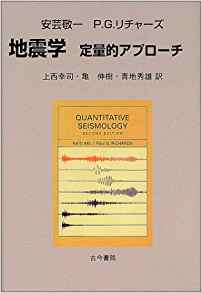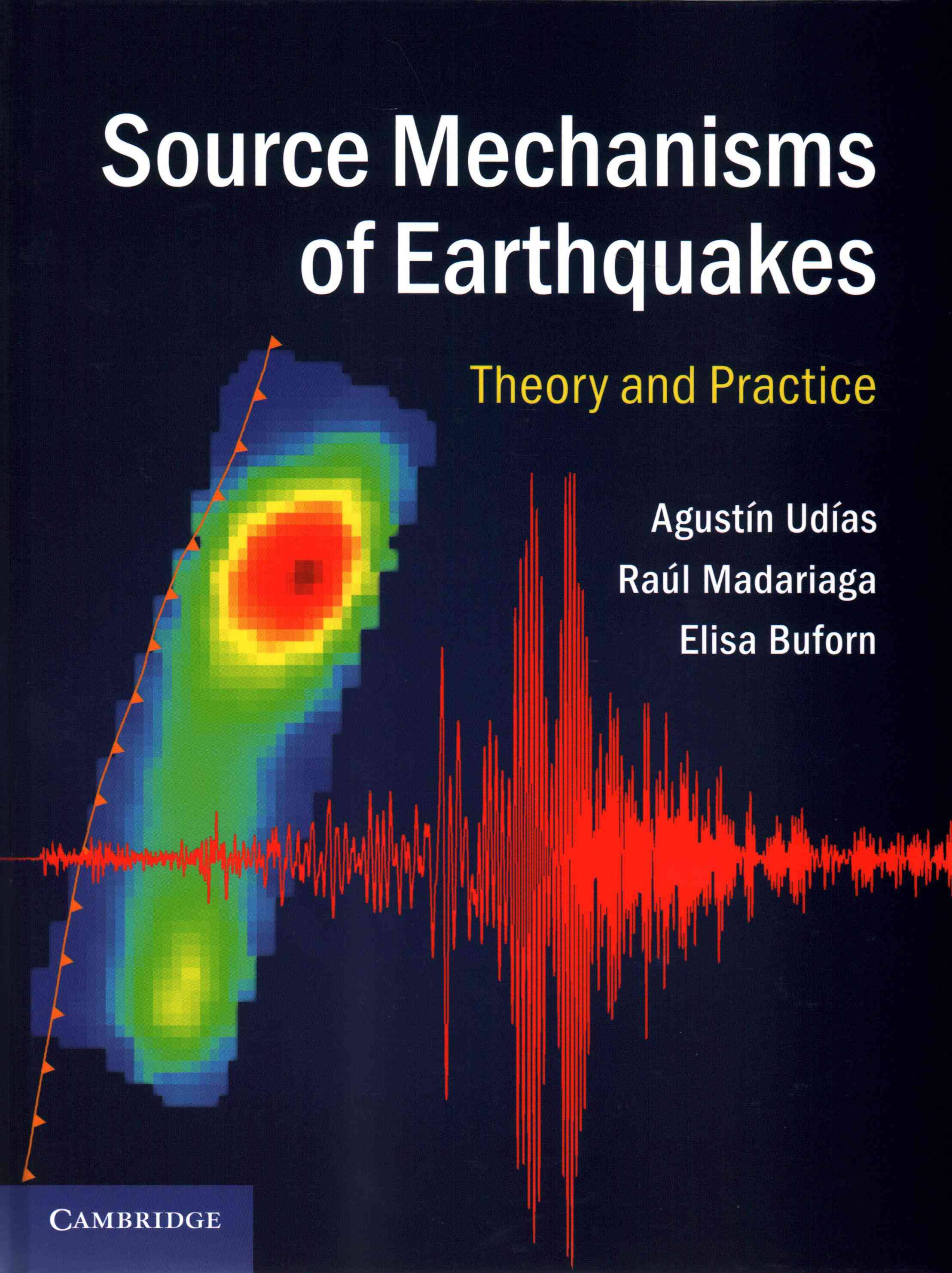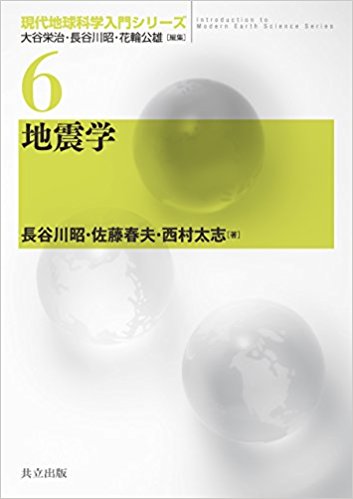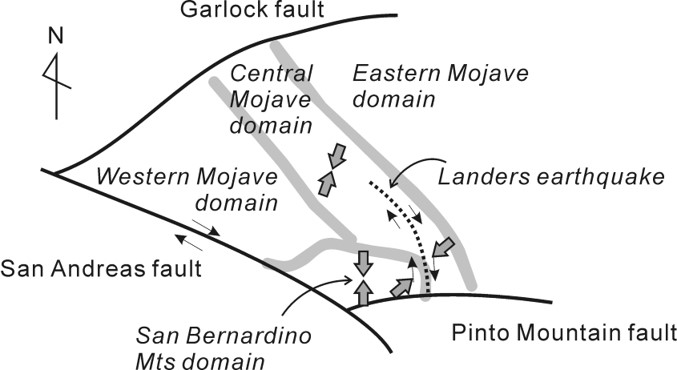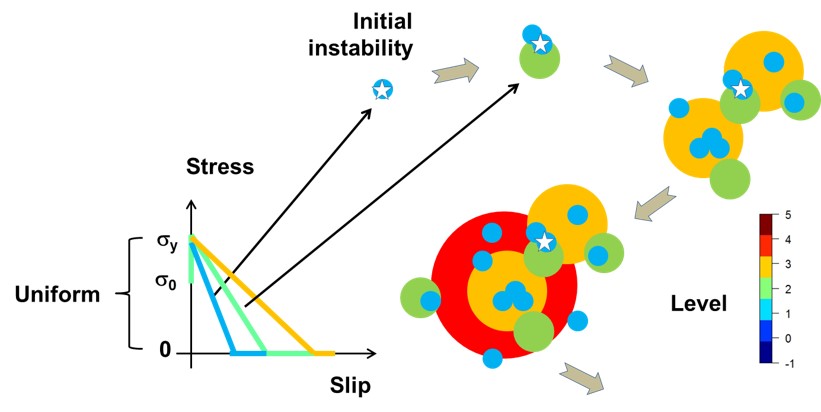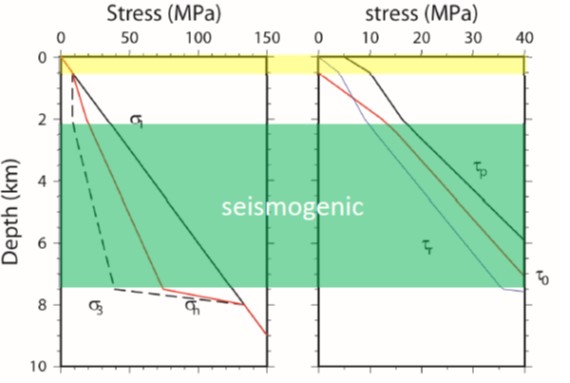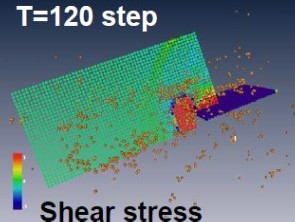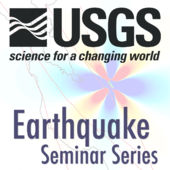Earthquake Science
Prefaces
You will know that my research approaches have been strongly influeced by the following textbooks (to which I could contribute somehow ...) written by my tutors and colleagues. Check them out!
Topics/Keywords
R1.1 Fault geometry controls rupture process
Earthquake fault is often aproximated as a planar plane in seismological analysis, but it is geometrically complex, including bend, branching and segmentation at various scales. From mechanical point of view, even a slight irregularity of geometry changes stress accumulation and dynamic stress perturbation. Earthquake rupture is then predominaly controlled by such irregularity of fault geometry, in its rupture expansion, rupture directivity, fault interaction and location of energetic asperity. Consequently radiated seismic waves and near-field ground motions are also influenced by fault geometry. (e.g. Aochi and Fukuyama, 2002; Aochi and Madariaga, 2003)
Conjugate faults can be ruptured during a signle earthquake.
The conjugate faults are consistent with the externally loaded stress field, and its kinematics is oposite at the junction. However earthquake rupture can propagate on conjufate fault system one after another, as during the 2007 Chuetsu-oki earthquake (Aochi and Kato, 2010).
R1.2 Multi-scale fault heterogeneity
Earthquake rupture shows a scaling of scale-invariant Fractal feature and its description can be normalized to no-dimension. For example, fault slip is propotional to fault dimension, but the slip rate and rupture velocity are invariant with scale. If so, fracture energy is required linearly scaled and this is a key to understand the earthquake mechanics at various scales (Aochi and Ide, 2004). Ide and Aochi (2005) propose multi-scale heterogeneous fault model, in which heterogeneity is expressed by superposition of various sized patches and fracture energy is proportional to patch size. This mode allows to generate different magnitude events coexising on a fault plane.
Earthquake growth: Cascade or nucleation?
It had been thought that cascade and nucleation rupture growths conflict each other as the two concepts are based on non-scaling or scaling of frictional property, respectively. However, in the framework of multi-scale heterogeneity, cacasde and nucleation rupture growths are generated naturally according to just the spatial distribution of patches. If the patches are located densely for the interactions, cascade rupture growth is obseved (interaction of small patches becomes large enough to trigger a large one). If they are located sparse, nucleation is required to trigger large patch. (Ide and Aochi, 2005; Aochi and Ide, 2009)
R1.3 Fault rheology
Fricitonal property of fault evolves with time due to physical and chemical reaction. It is well recognized that friction reduces with on-going slip during an earthquake ("slip-weakening process"). However it is always a quesion how the frictional proprty evolves during inter-seismic period with respect to the state of contact. This process cannot be written with a simple equation, as many factors are involved. Several attêmps have been carried out to take into account of healing process of friction with time or aseismic slip (Aochi and Matsu'ura, 2002; Aochi and Ide, 2017).
Stress decreasing during aseismic slip
A quation has been raised if friction (stress) is increased or decreased during aseismic slow slip. During the 2009-2010 aseismic slip found at Gallero in Mexican subduction, stress continus decreasing during the sequence of a few months. (Maury et al., 2014)
Coming soon.
R1.5 Recent earthquakes
It is important to learn from the past earthquakes. From the point of view of dynamic rupture process, I have worked on the 1992 Landers (USA), 1999 Izmit (Turkey), 2007 Chuetsu-oki (Japan), 2011 Tohoku (Japan) earthquakes, for example. Some preliminary unpublished works were done for the 2008 Sichan (China) and 2008 Miyagi-Iwate (Japan) as well.
2011 M9.0 Tohoku earthquake
This earthquake was unfortunately beyond the understanding at that time and revealed that seismic cycle is more complex: multi-scale features both in space and time rather than a simple cycle of characteristic earthquakes. Some call it as super seismic cycle. We applied the concept of multi-scale heterogeneity in fracture energy on the plate interface. Namely patches of different size with different fractuer energy interact each other at different scales The M9 event begins gradually from small patches and ruptured a medium-size patch at depth (correponding to M7 - 7.5). After becoming larger over the area of the foreshock (M7.3) in the shallow, the event got sufficient energy to rupture a M9 patch behind. This is our interpretation (Aochi and Ide, 2011; Ide and Aochi, 2013; Aochi and Ide, 2014).
Coming soon.

